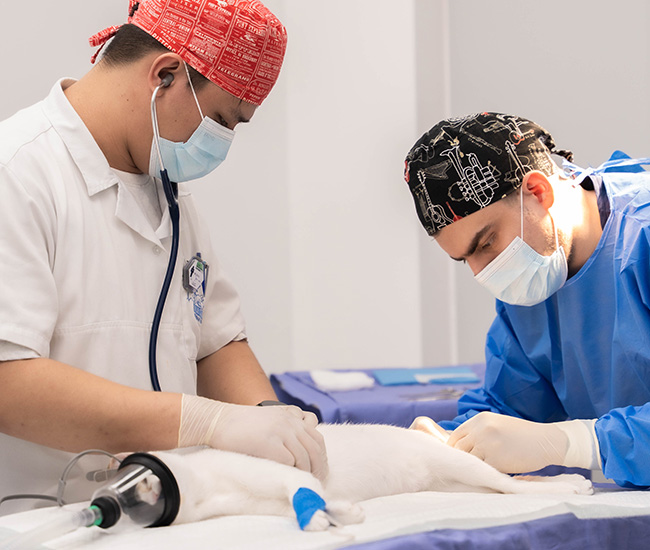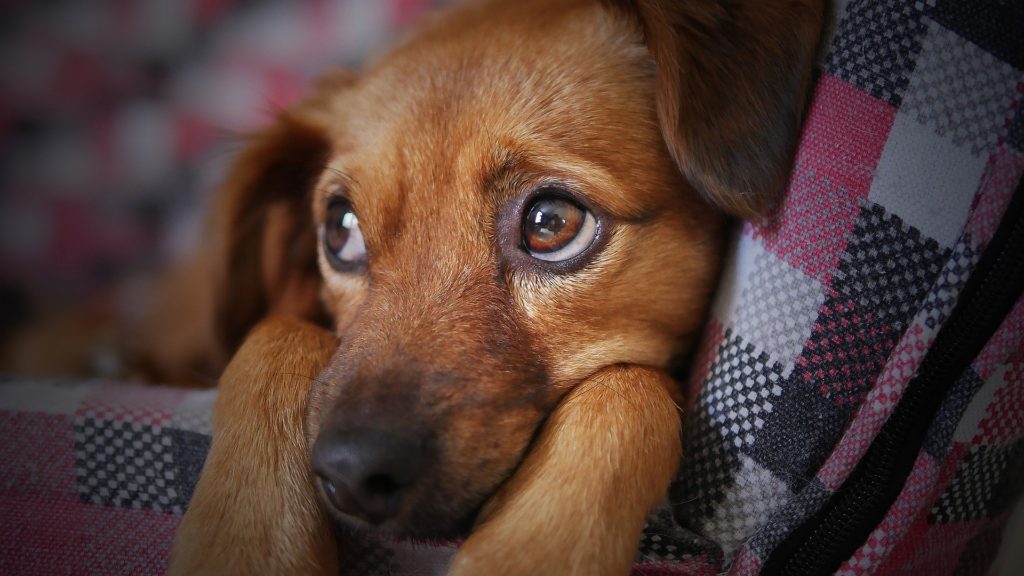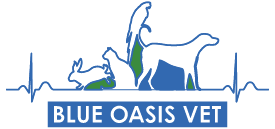Surgical Care
At Blue Oasis Veterinary Clinic, we understand that hearing your beloved pet needs surgery can be overwhelming and even frightening. Our pets are our family members, and subjecting them to a surgical procedure is never an easy decision. That is why our veterinary staff is dedicated to making sure that every suggestion that is made is based on compassion, clinical data, and your pet’s best interest.
Whether you need a simple spay or neuter procedure or a more involved surgery, we take the time to guide you through each step of the process – from pre-surgery consultations to recovery after surgery. We want to educate you and build your confidence so that you feel fully informed and confident to make decisions regarding your pet’s care
Why Surgery May Be Necessary?
Although surgery seems daunting, it is in many cases the best form of treatment for many different medical conditions. The following are some frequent reasons your pet might be advised to have a surgical procedure:
- Spaying and neutering as preventive care measures to prevent unwanted litters and minimise the risk of reproductive organ cancers.
- Removal of tumours and growths, benign and malignant.
- Fractures, torn ligaments, and abnormal joint conditions that require surgical repair.
- Exploratory surgical interventions to determine or correct internal abnormalities.
- Emergency surgeries for trauma, obstruction, or internal bleeding.
- Extractions of damaged or diseased teeth as well as oral surgeries.

Rest assured that if our veterinarians recommend surgery, they truly believe that it is the optimum line of action for your pet’s future health.

We Uphold the Highest Standards of Veterinary Surgical Care
At Blue Oasis Veterinary Clinic, we take pride in following high standards in veterinary surgery. We use advanced techniques, state-of-the-art equipment, and careful attention to detail, complemented by an empathetic team of veterinarians and nurses to provide your pet’s experience as smooth and risk-free as can be.
Comprehensive Pre-Surgery Evaluation
Prior to any operation, your pet is thoroughly evaluated to determine whether it is fit to undergo the procedure.
- In-Depth Physical Exam: All surgery starts with a head-to-toe physical examination.
- In-depth blood work: Blood tests enable us to assess organs, identify potential underlying conditions, and tailor anaesthetic to reduce risks.
- Diagnostic Imaging: If necessary, ultrasound scans, X-rays or MRI supply an improved picture of internal problems, enabling our team to plan accurately.
- Medical History Review: We assess your pet’s past surgeries, medication use, allergies, and breed-specific risks.
Your pet’s well-being is our number one concern, and we never proceed unless we fully comprehend their health condition.
Sterile, Dedicated Operating Suites
All of our surgery is performed exclusively within advanced suites that specialise in sterile procedures.
- Control Environment: All of our surgery rooms are in isolation to avoid contamination and ensure an aseptic environment.
- Advanced equipment: We employ top-class surgical instruments, anaesthetic equipment, and monitoring equipment.
- Sterile Procedure: Instruments are sterilised by industry-grade autoclaves, and packs used in surgery are sealed before operation.
These stringent surroundings minimise post-operative risk of infection and guarantee that your animal is treated to the same standards you’d like to receive if you were in a human hospital.
Specialised Anaesthesia and Monitoring
The trained professionals provide anaesthesia to the pet, which is also customised according to its size, breed, health status, and age.
- Personalised Anaesthetic Plans: We apply safe, up-to-date anaesthetics appropriate to your pet’s unique profile.
- Constant Monitoring: A dedicated pet nurse observes your pet’s vitals like oxygen levels, heart rate, temperature, and breathing rate at every moment of the procedure.
- Pain Management Protocols: We actively manage pain both pre-, intra- and post-operatively to keep your pet as comfortable as possible.
Your pet is not left alone while it’s in the recovery phase — a member of our team accompanies and observes it until its fully awake.
Hygiene and Infection Control Protocols
Cleanliness isn’t just a priority, it’s a non-negotiable standard at Blue Oasis.
- Surgical Attire: Everyone wears caps, masks, sterile gloves, and gowns.
- One-Time-Use Materials: Wherever possible, we utilise one-time-use materials to further minimise the risks of contamination.
- Post-Operative Clean-Up: All instruments and surgical sites are thoroughly cleaned up manually and with ultrasound following every procedure before being autoclaved to ensure our high standards of hygiene.
Complete Post-Surgical Care
Recovery is as crucial as the surgery itself. Your pet is provided excellent post-operative attention specific to their needs following surgery.
- Monitoring and Pain Management: In-clinic recovering pets are closely monitored and administered pain relief medication to facilitate recovery.
- Home Care Instructions: We also include detailed home care instructions, such as medication regimens, activity restrictions, and wound care tips
- Follow-Up Appointments: We book follow-up visits to check on healing and remove sutures if necessary. We’re also here to answer any questions you might have throughout your pet’s recovery process.
Types of Surgical Procedures We Offer
Spay and Neuter Surgery
These preventive surgeries avoid undesired litters and health threats like reproductive diseases, cancerous growths (e.g. mamma tumours in female pets, anal gland tumours in male dogs) and infections (e.g. pyometra).
Spaying and neutering also cut down on behavioural problems related to mating behaviours and “spraying” in male cats.

Orthopaedic surgery
Orthopaedic surgery repairs bone fractures, joint abnormalities, and ligament ruptures and aim to restore full and painless mobility.
Emergency surgery
Trauma, internal haemorrhage, foreign objects causing obstruction, twisted stomach, inability to give birth, etc. have to treated with immediate surgery. Such life-supporting measures are taken to stabilise and treat seriously ill pets urgently.
Dental surgery
These include tooth extractions, removal of oral tumours, and advanced gum disease treatment. They alleviate pain, avoid infection, stop spreading bacteria to the organs via the blood stream as well as enhance your pet’s capacity to consume food and live life comfortably.
Ophthalmic surgery
These surgeries correct problems like eyelid abnormalities, cherry eye, injuries of the eye, but also replacement of cataract lenses. In extreme circumstances (e.g. eye tumours) the eyeball might have to be removed surgically to alleviate pain or avoid further medical issues.
All eye surgeries are performed by our certified and experienced eye specialists.
Frequently Asked Questions
Preparation starts as you consult your veterinarian. You will be provided with specific directions based on your pet’s health, age, and procedure type. Typically, your pet shouldn’t eat for 8–12 hours leading up to surgery to minimise the chance of vomiting and aspiration while under anaesthesia. In rare instances, water is also withheld. Your pet should be well-rested the day before and be on time at the clinic. Your vet will reaffirm fasting time and deliver specific pre-surgery directions to guarantee an uneventful and safe experience for surgery.
Yes, almost all surgeries in dogs and cats require general anaesthesia to keep your pet pain-free, quiet, and unaware throughout the surgery. Before an anaesthetic is used, blood work is done to assess kidney and liver function to ensure that your pet can safely process the medications. During surgery, one of our skilled technicians closely monitors your pet’s vitals like heart rate, breathing, oxygen levels, and temperature using sophisticated equipment. Our main aim is to ensure maximum safety measures before, throughout, and following an anaesthetic.
Many surgeries involve sutures or stitches, which are in most cases absorbable (don’t have to be removed). In rare cases it is necessary to use non-absorbable suture materials, which have to be removed after 10 – 14 days by the vet post-surgery during a follow-up appointment. It’s crucial to prevent your pet from licking, biting, or scratching the incision site, as this can lead to infection or delayed healing or in worst case opening of the surgery wound. We will ask you to make sure your pet wears recovery cone (collar) or a post-surgical onesie to protect the area during healing.
Post-surgery recovery depends on surgery type and your pet’s general condition. Your pet can go home on the same day, or you might need to keep them a few days for observation. We will provide you with extensive guidance on at-home pet care, such as wound healing, feeding, restrictions on activity, and medication schedules. Your pet might receive pain medication or antibiotics, but never under any circumstances should, give your pet human medication, as it might be toxic to them. Watch your pet closely for signs of pain, swelling, or abnormal behaviour and let us know if you observe anything unusual. Our staff is invested in your pet’s complete recovery.
A quiet environment, a sterile resting spot, and close adherence to your vet’s aftercare routine create an environment for smooth recovery. Restrict your pet’s activity to avoid putting stress on the incision site. Take medications as directed, and return your pet for follow-up visits as recommended. Provide lots of affection, but not unreasonable handling or play activities while healing. Optimal food and water also aid healing. If your pet is experiencing distress, appetite loss, or incision complications, get in touch with our clinic for advice as soon as possible.



